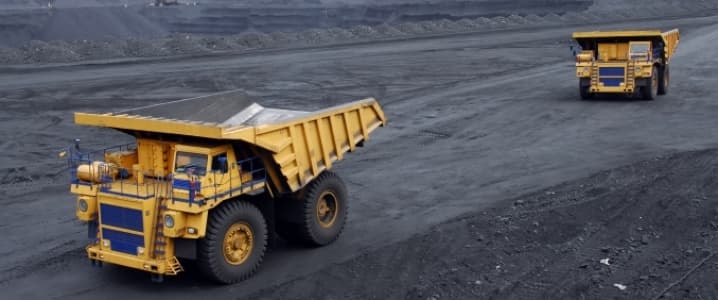With the market capitalization of the coal industry down 94 percent since 2011, one question has to be paramount on the minds of all investors in the space– can the coal industry ever recover? The answer is that the odds don’t look good, at least for current equity holders.
Coal continues to be a generally competitive source of power from an economics standpoint. The problem for the industry is that natural gas has become slightly cheaper, and perhaps more importantly, government regulation and social pressures have led to a complete halt in the construction of new coal plants. For similar reasons, many existing coal plants are being switched over to natural gas. This trend had been largely isolated to the U.S. with emerging markets still big consumers of coal. Now with the signing of the Paris Accord and increased efforts by Chinese authorities to curb endemic smog problems, even coal plants abroad appear to be endangered. Related: 50,000 Laid Off In Saudi Arabia As Oil Crisis Bites Deeper
Against this backdrop it is little wonder that major coal companies like Peabody have declared bankruptcy. Those bankruptcies carry an additional threat to the environment as well since the bankruptcy process allows coal mine operators to avoid the costs associated with pollution cleanup from shuttered mines. This in turn leaves the bill at the doorstep of tax payers or else leaves a significant ecological issue unaddressed.
Beyond that though, coal miners have simply found themselves in an untenable position, much like the dinosaurs at the onset of the ice age. Coal miners, like most mining companies, have historically used large amounts of debt to finance their operations. Debt is a cheaper source of capital than equity funding, so rationale executives looking to maximize shareholder or owner value naturally look to lower their cost of capital through additional debt financing. This is particularly appealing for miners of all stripes since they have high levels of fixed assets, which make attractive collateral for syndicated loans and bonds. Related: Why Oil Prices Will Likely Drop Below $40 Soon
As a result, many coal miners are saddled today with large amounts of debt in an environment that has suddenly become an anchor as miners look to right size and adjust to the need for lower volumes. With many mines in the Eastern U.S. closing, miners still cannot shed the debt that they need to in order to have a smaller viable business serving what remains of the coal market.
In particular, mines in the Power River Basin in Wyoming still remain viable and there is a significant and unavoidable need for thermal coal used in steel. With the steel industry starting to show some signs of a tentative rebound, the coal industry should be able to survive in a smaller and more cost-efficient state. Instead, debt in the industry is likely to wipe out nearly all of the current equity holders. Related: Shell’s Profits Plunge 83%
Many industries struggled to retrench and right size in the face of upheaval. Coal is not new in that respect. What makes it more unique is the fact that the industry faces a confluence of heavy debt and social disapprobation. Against these forces, the traditional coal industry will likely never regain its historical standing. It’s almost impossible to come up with an industry which has shed almost 95 percent of its equity value and then regained its stature. Coal will be no different.
Yet there is still room for a smaller and more innovative coal industry that services niche applications. There is probably also room for a coal industry that services the poorest and least sophisticated third world countries such as those in Africa. The latter is unlikely to be the U.S. coal industry though. Investors in coal should look past their losses and move on to greener pastures rather than doubling down on a lost cause.
By Michael McDonald of Oilprice.com
ADVERTISEMENT
More Top Reads From Oilprice.com:
- The Shale Sector Just Got Two Critical Wins – In Two Different States
- As Oil Markets Tighten, Geopolitical Events Matter Again
- Low Oil Prices Hitting Real Estate in UAE



















Importation of coal exposed the Indian rupee to to devaluation due to a trade deficit. So newer solar PPAs in rupees are improving trade imbalance and stabilizing the rupee.
So US exporters of coal are up against a strong dollar and cheap solar.
"government regulation and social pressures have led to a complete halt in the construction of new coal plants". Wrong. There are 1,000 HELE ultra-supercritical coal plants at various stages of construction, approval and feasibility across the Asian countries.
"significant and unavoidable need for thermal coal used in steel". Wrong. Thermal coal is used for power generation. Metallurgical, or coking, coal is used for steel production.
The actual premise of the article is completely wrong. Coal is a boom or bust industry. Prices go up, too many new mines come on line so prices drop again. Overpriced mines go broke, supply comes off the market and prices go up again. This cycle will swing up again. It is basic economics.
Miners are a tough lot and will see this down cycle through.
Ummm...you know an ice age didn't kill the dinosaurs, right? Lol